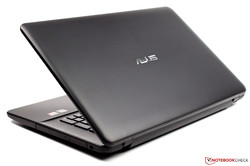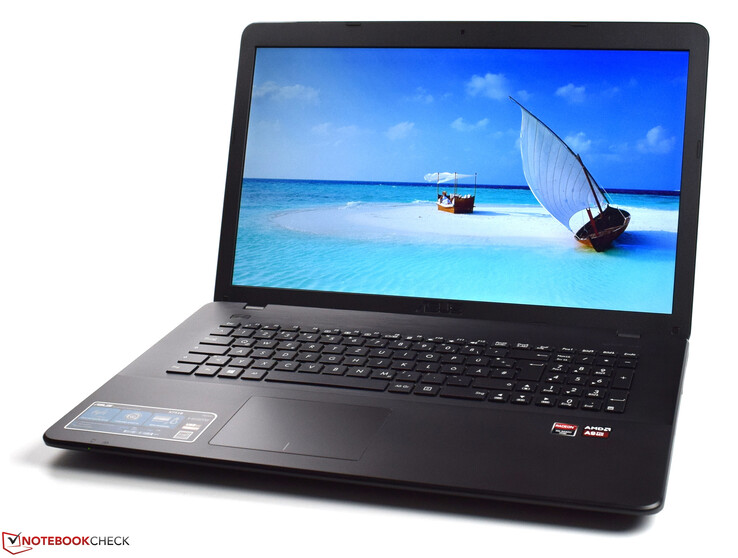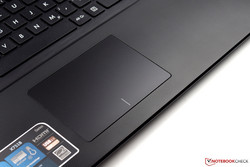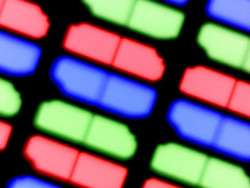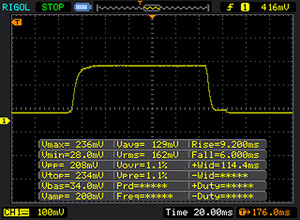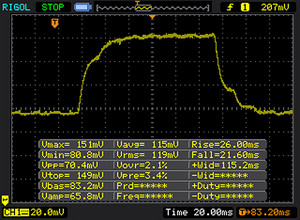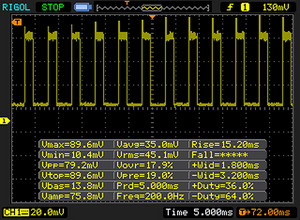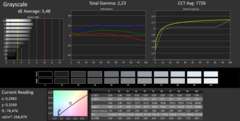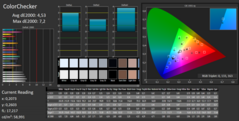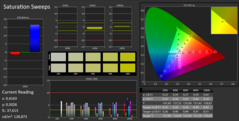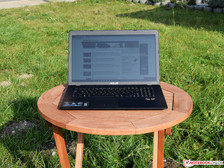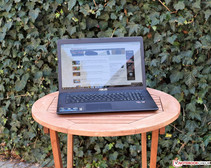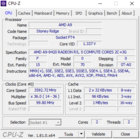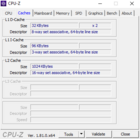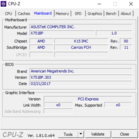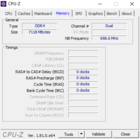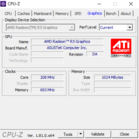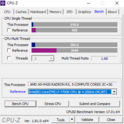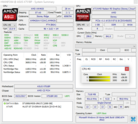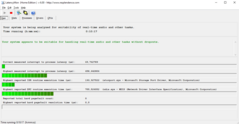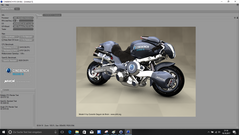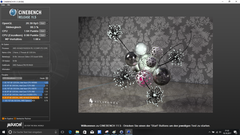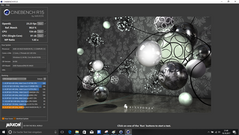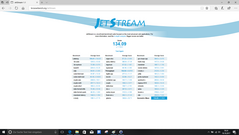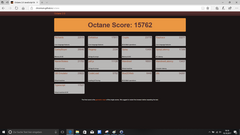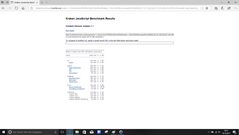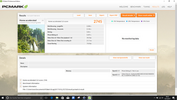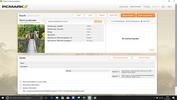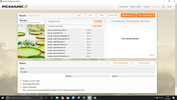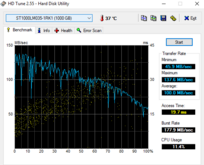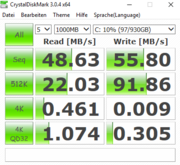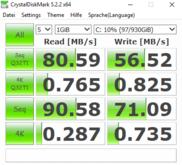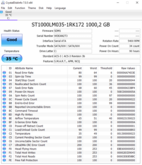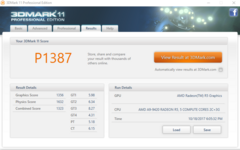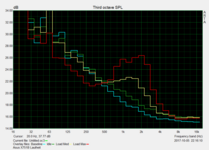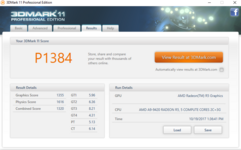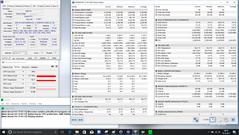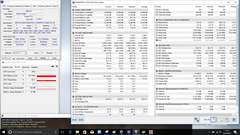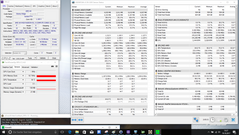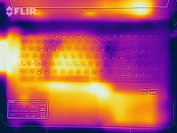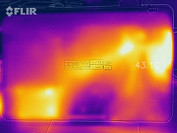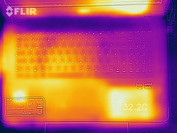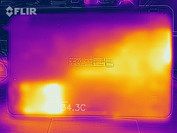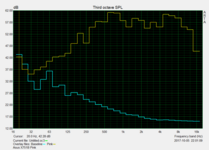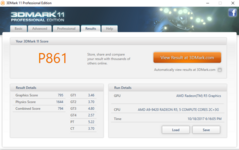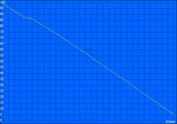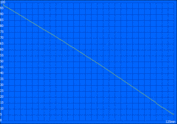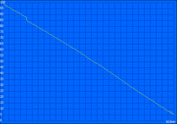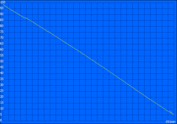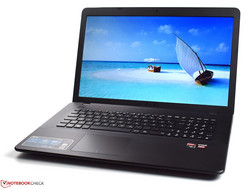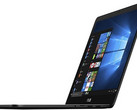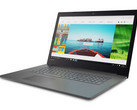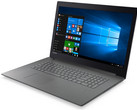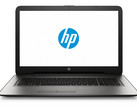Asus VivoBook X751BP (AMD A9-9420, HD+) Laptop Review

For the original German article, see here.
Asus’s latest VivoBook X751BP is a pure and straight office and business device with a 17-inch HD+ resolution display. It is based on AMD’s Stoney Ridge APU featuring an AMD A9-9420 microprocessor and an integrated AMD Radeon R5 graphics processor without dedicated video RAM but a shared memory architecture instead. Our review unit was equipped with 8 GB of DDR4 RAM and a 1 TB hard drive, and sells for 489 Euros (~$569) in Europe. As such, the X751BP would be considered a truly affordable business notebook. Options include a different processor as well as some storage options; however the AMD A9-9420 reviewed by us is already the top of the range model for this particular notebook. Overall, the device turned out to be rather sluggish and we would advise everyone not to expect too much. Further details on how badly it really performed can be found in the respective sections below. See the following table for the devices we have decided to compare the VivoBook to, all of which are affordable 17-inch business notebooks.
| Lenovo IdeaPad 320 | Lenovo V320 | HP 17-y044ng | HP 17-x066ng | |
| CPU | AMD E2-9000 | Intel Core i5-7200U | AMD A10-9600P | Intel Core i3-6006U |
| GPU | AMD Radeon R2 (Stoney Ridge) | Intel HD Graphics 620 | AMD Radeon R5 (Bristol Ridge) | Intel HD Graphics 520 |
| Display | 17.3-inch, 1600x900 | 17.3-inch, 1920x1080 | 17.3-inch, 1600x900 | 17.3-inch, 1920x1080 |
| RAM | 8 GB DDR4 | 8 GB DDR4 | 8 GB DDR4 | 8 GB DDR4 |
| Storage | 1 TB HDD | 256 GB SSD | 1 TB HDD | 1 TB HDD |
| Score | 75% | 82% | 77% | 79% |
Case and Connectivity
The VivoBook’s case is made primarily out of plastic with slightly roughened surfaces for improved grip. Unfortunately, it also acts as a superb fingerprint magnet. Its black design is inconspicuous and there are no color accents whatsoever.
For a 17-inch device the base’s rigidity is fairly decent, however the lid is pretty flexible. It responds very willingly to torsional forces, and applying pressure to the back results in minor yet visible ripples at the front. All things considered, the case is very sturdy despite its size. Due to the lack of dedicated maintenance flaps upgradability is somewhat restricted, and the entire bottom cover has to be removed in order to replace or upgrade the hard disk drive or the RAM.
All devices in our test group weigh between 2.6 and 2.8 kg (~5.7 to ~6.2 lb), and the VivoBook can be found at the lower end of this spectrum. The charger adds another 246 g (~8.7 oz). Due to the comparatively low weight it is not possible to open the lid one-handed. While the hinges are too firm for one-handed operation, they are not firm enough to prevent display teetering entirely.
In terms of ports the VivoBook offers what we would have expected from an office notebook. Unfortunately, port distribution is somewhat one-sided with almost all ports on the left-hand side. Spacing between the three USB 3.0 ports is minimal and thus troublesome, and the SD card reader is located at the front. Tested with our usual reference card, a 64 GB Toshiba Exceria Pro SDCX UHS-II, the VivoBook managed a meager 19 MB/s worthy of no more than last place. That said, the other devices in our test group were not exactly Speedy Gonzales in this test either - the Lenovo IdeaPad 320’s disappointing 28 MB/s were sufficient for the first place.
Wi-Fi performance was similarly poor, with 92 MBit/s receiving and 62 MBit/s transmitting data. The only device even slower was the HP 17-y044ng. In addition, the Wi-Fi modem made by Qualcomm also supports Bluetooth 4.0. Higher speeds of up to 1 Gbit/s are available via the notebook’s Gigabit Ethernet port.
Connectivity
| SD Card Reader - average JPG Copy Test (av. of 3 runs) | |
| Lenovo Ideapad 320-17AST-80XW0013GE (Toshiba Exceria Pro SDXC 64 GB UHS-II) | |
| HP 17-y044ng (Toshiba Exceria Pro SDXC 64 GB UHS-II) | |
| Lenovo V320-17IKB 81AH0002GE (Toshiba Exceria Pro SDXC 64 GB UHS-II) | |
| HP 17-x066ng (Toshiba Exceria Pro SDXC 64 GB UHS-II) | |
| Asus VivoBook X751BP-TY048T (Toshiba Exceria Pro SDXC 64 GB UHS-II) | |
| Networking | |
| iperf3 transmit AX12 | |
| Lenovo Ideapad 320-17AST-80XW0013GE | |
| Lenovo V320-17IKB 81AH0002GE | |
| HP 17-x066ng | |
| Asus VivoBook X751BP-TY048T | |
| HP 17-y044ng (jseb) | |
| iperf3 receive AX12 | |
| Lenovo Ideapad 320-17AST-80XW0013GE | |
| Lenovo V320-17IKB 81AH0002GE | |
| HP 17-x066ng | |
| Asus VivoBook X751BP-TY048T | |
| HP 17-y044ng (jseb) | |
Input Devices
The 6-row chiclet keyboard sits flush with the VivoBook’s top case. At 16 x 16 mm (~0.63 x 0.63 in) the roughened keys are sufficiently sized and their white labels are easy to read. Unfortunately, typing is somewhat uncomfortable due to the spongy key travel and feedback as well as annoying clatter (despite the fact that the keys seem to sit very tight and do not wobble at all). The same must be said about the touchpad: at 10.5 x 7.5 cm (~4.1 x 3 in) it is decently large, offers sufficient slippage, and unlike the keyboard it is slightly recessed into the top case. So far so good, if only it was not for the lack of precision along the edges and corners. On the plus side, we did not experience any problems with multi-touch input, and the ClickPad’s acoustic feedback when clicked is pleasantly quiet.
Display
Our review unit was equipped with an HD+ panel, the only option for the VivoBook X751BP. The panel’s resolution of 1600x900 results in a pixel density of no more than 106 PPI, and its average brightness was only 259 nits. Still, it was brighter than the Lenovo IdeaPad 320 and the HP 17-y044ng, and managed to secure a decent third place in this category. Given its high black level of 0.45 nits and the low overall brightness, the resulting contrast ratio is a meager 591:1, and at just 83% the brightness distribution was mediocre at best. That said, the VivoBook was in good company since none of its competitors was significantly better. On a positive note, there was no annoying screen bleeding. On a more negative note we found PWM flickering at a very low frequency of 200 Hz.
| |||||||||||||||||||||||||
Brightness Distribution: 83 %
Center on Battery: 266 cd/m²
Contrast: 591:1 (Black: 0.45 cd/m²)
ΔE ColorChecker Calman: 4.53 | ∀{0.5-29.43 Ø4.78}
ΔE Greyscale Calman: 5.48 | ∀{0.09-98 Ø5}
82% sRGB (Argyll 1.6.3 3D)
53% AdobeRGB 1998 (Argyll 1.6.3 3D)
57.4% AdobeRGB 1998 (Argyll 3D)
81.9% sRGB (Argyll 3D)
55.5% Display P3 (Argyll 3D)
Gamma: 2.23
CCT: 7726 K
| Asus VivoBook X751BP-TY048T AU Optronics AUO B173RTN01.1, 1600x900, 17.3" | Lenovo Ideapad 320-17AST-80XW0013GE AU Optronics B173RTN02.1, 1600x900, 17.3" | Lenovo V320-17IKB 81AH0002GE LG Philips LP173WF4-SPF5, 1920x1080, 17.3" | HP 17-y044ng AU Optronics, 1600x900, 17.3" | HP 17-x066ng AU Optronics B173HW01 V0, 1920x1080, 17.3" | |
|---|---|---|---|---|---|
| Display | -10% | 10% | -9% | 10% | |
| Display P3 Coverage (%) | 55.5 | 50.5 -9% | 66.5 20% | 50.9 -8% | 63.6 15% |
| sRGB Coverage (%) | 81.9 | 73.3 -11% | 84.5 3% | 73.8 -10% | 86.5 6% |
| AdobeRGB 1998 Coverage (%) | 57.4 | 52.1 -9% | 61.8 8% | 52.6 -8% | 63.3 10% |
| Response Times | -9% | -17% | -22% | -27% | |
| Response Time Grey 50% / Grey 80% * (ms) | 47 ? | 40 ? 15% | 35 ? 26% | 43 ? 9% | 38 ? 19% |
| Response Time Black / White * (ms) | 15 ? | 20 ? -33% | 24 ? -60% | 23 ? -53% | 26 ? -73% |
| PWM Frequency (Hz) | 200 ? | 119000 ? | |||
| Screen | -60% | 17% | -53% | 13% | |
| Brightness middle (cd/m²) | 266 | 205 -23% | 412 55% | 264 -1% | 331 24% |
| Brightness (cd/m²) | 259 | 209 -19% | 377 46% | 232 -10% | 310 20% |
| Brightness Distribution (%) | 83 | 81 -2% | 83 0% | 80 -4% | 87 5% |
| Black Level * (cd/m²) | 0.45 | 0.55 -22% | 0.39 13% | 0.59 -31% | 0.33 27% |
| Contrast (:1) | 591 | 373 -37% | 1056 79% | 447 -24% | 1003 70% |
| Colorchecker dE 2000 * | 4.53 | 11.26 -149% | 5.04 -11% | 10.58 -134% | 4.58 -1% |
| Colorchecker dE 2000 max. * | 7.2 | 19.86 -176% | 8.84 -23% | 18.96 -163% | 7.83 -9% |
| Greyscale dE 2000 * | 5.48 | 13.85 -153% | 5.28 4% | 13.13 -140% | 6.18 -13% |
| Gamma | 2.23 99% | 2.48 89% | 2.44 90% | 2.49 88% | 2.34 94% |
| CCT | 7726 84% | 15307 42% | 6900 94% | 14044 46% | 6076 107% |
| Color Space (Percent of AdobeRGB 1998) (%) | 53 | 47 -11% | 55 4% | 48 -9% | 56 6% |
| Color Space (Percent of sRGB) (%) | 82 | 73 -11% | 84 2% | 74 -10% | 86 5% |
| Total Average (Program / Settings) | -26% /
-43% | 3% /
11% | -28% /
-40% | -1% /
7% |
* ... smaller is better
Display Response Times
| ↔ Response Time Black to White | ||
|---|---|---|
| 15 ms ... rise ↗ and fall ↘ combined | ↗ 9 ms rise | |
| ↘ 6 ms fall | ||
| The screen shows good response rates in our tests, but may be too slow for competitive gamers. In comparison, all tested devices range from 0.1 (minimum) to 240 (maximum) ms. » 35 % of all devices are better. This means that the measured response time is better than the average of all tested devices (20.2 ms). | ||
| ↔ Response Time 50% Grey to 80% Grey | ||
| 47 ms ... rise ↗ and fall ↘ combined | ↗ 26 ms rise | |
| ↘ 21 ms fall | ||
| The screen shows slow response rates in our tests and will be unsatisfactory for gamers. In comparison, all tested devices range from 0.165 (minimum) to 636 (maximum) ms. » 80 % of all devices are better. This means that the measured response time is worse than the average of all tested devices (31.6 ms). | ||
Screen Flickering / PWM (Pulse-Width Modulation)
| Screen flickering / PWM detected | 200 Hz | ≤ 40 % brightness setting | |
The display backlight flickers at 200 Hz (worst case, e.g., utilizing PWM) Flickering detected at a brightness setting of 40 % and below. There should be no flickering or PWM above this brightness setting. The frequency of 200 Hz is relatively low, so sensitive users will likely notice flickering and experience eyestrain at the stated brightness setting and below. In comparison: 53 % of all tested devices do not use PWM to dim the display. If PWM was detected, an average of 8111 (minimum: 5 - maximum: 343500) Hz was measured. | |||
Due to the display’s high black level, blacks turn out visibly grey instead, and thanks to the poor contrast ratio, colors are pretty pale. With DeltaE deviations of 4.53 (colors) and 5.48 (grayscales) color accuracy was somewhat decent and much better than we would have expected. Color space coverage was 82% sRGB and 53% AdobeRGB, and once again we were pleasantly surprised considering that some notebooks priced over 1000 Euros (~$1164) are equipped with displays with similar specifications. The display is accurate enough for non-professional photo editing purposes. Outdoors the device performed decently in the shade as overall brightness was not high enough for direct or indirect sunlight.
As expected, viewing angles were rather poor due to the display’s TN panel. Looking at the display from the sides results in significantly distorted colors.
Performance
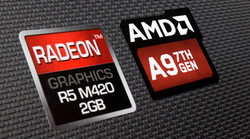
Based around an AMD APU the VivoBook X751BP is equipped with an A9-9420 processor, 8 GB of DDR4 RAM, and a 1 TB 2.5-inch hard disk drive. Accordingly, it is only suitable for simple office tasks and browsing the web.
Processor
Based on the Stoney Ridge APU series, AMD’s A9-9420 is an entry-level CPU and the successor to the A9-9410. Its two processing units run at 3.0 GHz and can boost up to 3.6 GHz based on demand. Our benchmarks showed that compared to the A10-9600P (HP 17-y044ng) the A9-9420 was slightly faster in single-core tasks. However, in multi-core tasks, it did not stand a chance against the competition and fell behind. In our review group, Intel's Core i5-7200U was the fastest contender.
Additional benchmarks for AMD’s A9-9420 can be found here.
Sustained load caused by our Cinebench R15 Multithread loop was no challenge for the VivoBook X751BP, and its scores remained consistently high with only minimal variation.
| Cinebench R15 | |
| CPU Single 64Bit | |
| Lenovo V320-17IKB 81AH0002GE | |
| Asus VivoBook X751BP-TY048T | |
| HP 17-y044ng | |
| HP 17-x066ng | |
| Lenovo Ideapad 320-17AST-80XW0013GE | |
| CPU Multi 64Bit | |
| Lenovo V320-17IKB 81AH0002GE | |
| HP 17-x066ng | |
| HP 17-y044ng | |
| Asus VivoBook X751BP-TY048T | |
| Lenovo Ideapad 320-17AST-80XW0013GE | |
| JetStream 1.1 - Total Score | |
| Lenovo V320-17IKB 81AH0002GE | |
| Asus VivoBook X751BP-TY048T | |
| HP 17-y044ng | |
| Lenovo Ideapad 320-17AST-80XW0013GE | |
System Performance
We use PCMark 8’s Home benchmark to assess overall system performance, and the VivoBook’s 2745 points are only good enough for second to last place. However, the difference between the VivoBook’s fourth place and the second place is negligible, and it is safe to say that our review unit is at eye level with both HP notebooks.
Subjectively speaking, we were disappointed by the Asus VivoBook X751BP. The system was sluggish and frequently stalled for several seconds. Replacing the hard disk drive with an SSD would undoubtedly improve application launch times and thereby perceived system performance significantly.
| PCMark 8 - Home Score Accelerated v2 | |
| Lenovo V320-17IKB 81AH0002GE | |
| HP 17-x066ng | |
| HP 17-y044ng | |
| Asus VivoBook X751BP-TY048T | |
| Lenovo Ideapad 320-17AST-80XW0013GE | |
| PCMark 8 Home Score Accelerated v2 | 2745 points | |
| PCMark 8 Creative Score Accelerated v2 | 2879 points | |
| PCMark 8 Work Score Accelerated v2 | 3046 points | |
Help | ||
Storage Devices
As mentioned before, our review unit came equipped with a regular 2.5-inch hard disk drive from Seagate, and while it offered sufficient storage space (1 TB) at only 5400 RPM, it was also fairly slow. HD Tune reported an average transfer rate of 100 MB/s, which would have been decent if it were not for its very poor 4K read and write performance. Unfortunately, Asus does not offer any SSD options for the VivoBook X751BP, and you will have to take matters into your own hands (and tools) if you want to equip the VivoBook accordingly.
| Asus VivoBook X751BP-TY048T Seagate Mobile HDD 1TB ST1000LM035 | Lenovo Ideapad 320-17AST-80XW0013GE Seagate Mobile HDD 1TB ST1000LM035 | Lenovo V320-17IKB 81AH0002GE SK Hynix HFS256G3BTND | HP 17-y044ng WDC Scorpio Blue WD10JPVX-75JC3T0 | HP 17-x066ng WDC WD10JPVX-08JC3T5 | |
|---|---|---|---|---|---|
| CrystalDiskMark 3.0 | 444% | 116318% | 1433% | 1368% | |
| Read Seq (MB/s) | 48.63 | 98.6 103% | 473.7 874% | 105.5 117% | 98.6 103% |
| Write Seq (MB/s) | 55.8 | 87 56% | 260.8 367% | 102 83% | 98.2 76% |
| Read 512 (MB/s) | 22.3 | 30.3 36% | 337 1411% | 19.17 -14% | 33.8 52% |
| Write 512 (MB/s) | 91.9 | 92.2 0% | 263.3 187% | 28.27 -69% | 45.98 -50% |
| Read 4k (MB/s) | 0.461 | 0.448 -3% | 29.41 6280% | 0.328 -29% | 0.395 -14% |
| Write 4k (MB/s) | 0.009 | 0.316 3411% | 73.3 814344% | 1.013 11156% | 0.96 10567% |
| Read 4k QD32 (MB/s) | 1.074 | 1.088 1% | 298.3 27675% | 0.891 -17% | 1.039 -3% |
| Write 4k QD32 (MB/s) | 0.305 | 0.154 -50% | 242.5 79408% | 1.03 238% | 0.959 214% |
GPU Performance
The A9-9420’s integrated GPU is named AMD Radeon R5, runs at 847 MHz, and does not have access to its own dedicated video RAM. Consequently, it uses the notebook’s DDR4 RAM as video memory (aka shared memory). Compared to Intel’s integrated GPUs the AMD Radeon R5’s performance was right in-between the HD Graphics 520 and HD Graphics 620. It supports AMD’s UVD 6 (Unified Video Decoder) with HVEC/H.265 and 4K decoding in hardware.
Further details and benchmarks for AMD’s Radeon R5 can be found here.
| 3DMark 11 - 1280x720 Performance GPU | |
| Lenovo V320-17IKB 81AH0002GE | |
| HP 17-y044ng | |
| Asus VivoBook X751BP-TY048T | |
| HP 17-x066ng | |
| Lenovo Ideapad 320-17AST-80XW0013GE | |
| 3DMark 11 Performance | 1387 points | |
Help | ||
Gaming Performance
The VivoBook X751BP is definitely not suitable for demanding games. It was only able to run “BioShock Infinite” smoothly on the lowest preset and the lowest resolution possible. Due to resolution and display incompatibilities, we were unable to choose the medium or high presets. It should, however, be fast enough for simple browser games.
| low | med. | high | ultra | |
|---|---|---|---|---|
| BioShock Infinite (2013) | 43.4 | 0 () | 0 () | 0 () |
| Mass Effect Andromeda (2017) | 12.2 | |||
| Prey (2017) | 21.5 | |||
| Rocket League (2017) | 41.4 | 25.6 | 16.3 | |
| Dirt 4 (2017) | 32.8 | |||
| Playerunknown's Battlegrounds (PUBG) (2017) | 12.1 | |||
| F1 2017 (2017) | 18 | 13 | 10 | |
| Ark Survival Evolved (2017) | 15 | 6.2 | ||
| FIFA 18 (2017) | 42.6 | 19.4 | ||
| Middle-earth: Shadow of War (2017) | 8 | |||
| The Evil Within 2 (2017) | 6 | |||
| ELEX (2017) | 6 | |||
| Destiny 2 (2017) | 10 |
Emissions & Energy
System Noise
A single fan is in charge of heat dissipation, but it remained off when idle and in low load scenarios and was only active under load. Accordingly, all we were able to make out when idle was the hard disk drive. At 35.1 dB(A), the VivoBook was noticeable, but far from annoying under load. The Lenovo IdeaPad 320 and HP 17-x066ng remained significantly quieter under load.
| Asus VivoBook X751BP-TY048T Radeon R5 (Stoney Ridge), A9-9420, Seagate Mobile HDD 1TB ST1000LM035 | Lenovo Ideapad 320-17AST-80XW0013GE Radeon R2 (Stoney Ridge), E2-9000, Seagate Mobile HDD 1TB ST1000LM035 | Lenovo V320-17IKB 81AH0002GE HD Graphics 620, i5-7200U, SK Hynix HFS256G3BTND | HP 17-y044ng Radeon R5 (Bristol Ridge), A10-9600P, WDC Scorpio Blue WD10JPVX-75JC3T0 | HP 17-x066ng HD Graphics 520, 6006U, WDC WD10JPVX-08JC3T5 | |
|---|---|---|---|---|---|
| Noise | 7% | 0% | -3% | -1% | |
| off / environment * (dB) | 31.1 | 30.6 2% | 30 4% | 30.2 3% | 30.6 2% |
| Idle Minimum * (dB) | 31.1 | 31 -0% | 30.5 2% | 32 -3% | 32.7 -5% |
| Idle Average * (dB) | 31.1 | 31 -0% | 30.5 2% | 32 -3% | 32.7 -5% |
| Idle Maximum * (dB) | 31.1 | 31 -0% | 30.5 2% | 32 -3% | 32.7 -5% |
| Load Average * (dB) | 32.4 | 22.6 30% | 35 -8% | 35.6 -10% | 33 -2% |
| Load Maximum * (dB) | 35.1 | 32.2 8% | 35.8 -2% | 34.8 1% | 32.7 7% |
* ... smaller is better
Noise level
| Idle |
| 31.1 / 31.1 / 31.1 dB(A) |
| HDD |
| 31.4 dB(A) |
| DVD |
| 33.7 / dB(A) |
| Load |
| 32.4 / 35.1 dB(A) |
 | ||
30 dB silent 40 dB(A) audible 50 dB(A) loud |
||
min: | ||
Temperature
Thermals are a non-issue for the VivoBook X751BP, which became clear very early on during our Cinebench R15 Multithread loop. Surface temperature remained fairly low, and only a single quadrant at the bottom reached 34.6 °C (~94 °F) under load. While the Lenovo IdeaPad 320 once again outperformed the VivoBook X751BP and remained slightly cooler, the other three competitors got noticeably warmer under load.
During our stress test internal CPU temperature reached a maximum of 73.5 °C (~164 °F) at a clock speed of 3.1 GHz, while the GPU remained cooler at only 64 °C (~147 °F). We found no negative effects on graphics performance: running 3DMark 11 immediately after our stress test yielded the exact same result as before.
(+) The maximum temperature on the upper side is 31.2 °C / 88 F, compared to the average of 34.3 °C / 94 F, ranging from 21.2 to 62.5 °C for the class Office.
(+) The bottom heats up to a maximum of 34.6 °C / 94 F, compared to the average of 36.8 °C / 98 F
(+) In idle usage, the average temperature for the upper side is 25.1 °C / 77 F, compared to the device average of 29.5 °C / 85 F.
(+) The palmrests and touchpad are cooler than skin temperature with a maximum of 28.5 °C / 83.3 F and are therefore cool to the touch.
(±) The average temperature of the palmrest area of similar devices was 27.6 °C / 81.7 F (-0.9 °C / -1.6 F).
| Asus VivoBook X751BP-TY048T Radeon R5 (Stoney Ridge), A9-9420, Seagate Mobile HDD 1TB ST1000LM035 | Lenovo Ideapad 320-17AST-80XW0013GE Radeon R2 (Stoney Ridge), E2-9000, Seagate Mobile HDD 1TB ST1000LM035 | Lenovo V320-17IKB 81AH0002GE HD Graphics 620, i5-7200U, SK Hynix HFS256G3BTND | HP 17-y044ng Radeon R5 (Bristol Ridge), A10-9600P, WDC Scorpio Blue WD10JPVX-75JC3T0 | HP 17-x066ng HD Graphics 520, 6006U, WDC WD10JPVX-08JC3T5 | |
|---|---|---|---|---|---|
| Heat | 1% | -10% | -8% | -4% | |
| Maximum Upper Side * (°C) | 31.2 | 29.6 5% | 37.3 -20% | 33.9 -9% | 36.5 -17% |
| Maximum Bottom * (°C) | 34.6 | 33.4 3% | 37 -7% | 40.1 -16% | 37.2 -8% |
| Idle Upper Side * (°C) | 28.2 | 27.1 4% | 28.7 -2% | 27.8 1% | 26 8% |
| Idle Bottom * (°C) | 27.6 | 29.7 -8% | 30.1 -9% | 30.2 -9% | 27.1 2% |
* ... smaller is better
Speakers
The speakers (Asus SonicMaster Technology) are located above the keyboard and utilize the display to reflect the sound towards the user, thereby avoiding the common problem of muffled sound on soft surfaces. A tool named Audio Wizard can be used for audio adjustments based on various presets. Overall, the sound quality was fairly decent - highs and mids were very clear and we even found traces of bass. At only 61 dB(A) the speakers were not very loud, but on the plus side they did not distort at maximum volume.
Asus VivoBook X751BP-TY048T audio analysis
(-) | not very loud speakers (61.7 dB)
Bass 100 - 315 Hz
(±) | reduced bass - on average 6.7% lower than median
(±) | linearity of bass is average (9.4% delta to prev. frequency)
Mids 400 - 2000 Hz
(+) | balanced mids - only 3.2% away from median
(+) | mids are linear (5.8% delta to prev. frequency)
Highs 2 - 16 kHz
(+) | balanced highs - only 2.3% away from median
(±) | linearity of highs is average (7.1% delta to prev. frequency)
Overall 100 - 16.000 Hz
(+) | overall sound is linear (14.6% difference to median)
Compared to same class
» 11% of all tested devices in this class were better, 4% similar, 85% worse
» The best had a delta of 7%, average was 21%, worst was 53%
Compared to all devices tested
» 18% of all tested devices were better, 4% similar, 78% worse
» The best had a delta of 4%, average was 24%, worst was 134%
Lenovo Ideapad 320-17AST-80XW0013GE audio analysis
(-) | not very loud speakers (68.9 dB)
Bass 100 - 315 Hz
(-) | nearly no bass - on average 21.4% lower than median
(±) | linearity of bass is average (14.7% delta to prev. frequency)
Mids 400 - 2000 Hz
(+) | balanced mids - only 2.1% away from median
(±) | linearity of mids is average (8.6% delta to prev. frequency)
Highs 2 - 16 kHz
(+) | balanced highs - only 4.8% away from median
(±) | linearity of highs is average (8% delta to prev. frequency)
Overall 100 - 16.000 Hz
(±) | linearity of overall sound is average (20.8% difference to median)
Compared to same class
» 47% of all tested devices in this class were better, 10% similar, 44% worse
» The best had a delta of 7%, average was 21%, worst was 53%
Compared to all devices tested
» 55% of all tested devices were better, 8% similar, 37% worse
» The best had a delta of 4%, average was 24%, worst was 134%
Frequency diagram (checkboxes selectable/deselectable!)
Power Consumption
When looking at power consumption, our review unit did not stand a chance against its competitors, every single one of which was more efficient. When idle, our review unit’s power consumption was between 4.9 and 10.5 W and quickly shot up to 51.1 W with singular peaks of up to 54.7 W under load. The 65 W charger is amply dimensioned, and our review unit’s battery did not discharge under maximum load.
| Off / Standby | |
| Idle | |
| Load |
|
Key:
min: | |
| Asus VivoBook X751BP-TY048T Radeon R5 (Stoney Ridge), A9-9420, Seagate Mobile HDD 1TB ST1000LM035 | Lenovo Ideapad 320-17AST-80XW0013GE Radeon R2 (Stoney Ridge), E2-9000, Seagate Mobile HDD 1TB ST1000LM035 | Lenovo V320-17IKB 81AH0002GE HD Graphics 620, i5-7200U, SK Hynix HFS256G3BTND | HP 17-y044ng Radeon R5 (Bristol Ridge), A10-9600P, WDC Scorpio Blue WD10JPVX-75JC3T0 | HP 17-x066ng HD Graphics 520, 6006U, WDC WD10JPVX-08JC3T5 | |
|---|---|---|---|---|---|
| Power Consumption | 34% | 18% | 20% | 9% | |
| Idle Minimum * (Watt) | 4.9 | 4.7 4% | 3.8 22% | 4.7 4% | 5.5 -12% |
| Idle Average * (Watt) | 9.6 | 7.8 19% | 9.6 -0% | 7.7 20% | 9.9 -3% |
| Idle Maximum * (Watt) | 10.5 | 8 24% | 10.4 1% | 9 14% | 14.6 -39% |
| Load Average * (Watt) | 51.1 | 19.7 61% | 35.4 31% | 35.3 31% | 28 45% |
| Load Maximum * (Watt) | 54.7 | 19.6 64% | 34 38% | 38.3 30% | 24.6 55% |
* ... smaller is better
Battery Life
| Asus VivoBook X751BP-TY048T A9-9420, Radeon R5 (Stoney Ridge), 37 Wh | Lenovo Ideapad 320-17AST-80XW0013GE E2-9000, Radeon R2 (Stoney Ridge), 30 Wh | Lenovo V320-17IKB 81AH0002GE i5-7200U, HD Graphics 620, 35 Wh | HP 17-y044ng A10-9600P, Radeon R5 (Bristol Ridge), 41 Wh | HP 17-x066ng 6006U, HD Graphics 520, 41.5 Wh | |
|---|---|---|---|---|---|
| Battery Runtime | |||||
| WiFi Websurfing (h) | 2.7 | 3.7 37% | 5 85% | 4.4 63% | 6.3 133% |
Pros
Cons
Verdict
While the Asus VivoBook X751BP is marketed as a 17-inch business notebook, it had no trouble with multimedia content either. As we speak, the model equipped with AMD's A9-9420 dual-core processor, 8 GB of DDR4-RAM and a spacious yet slow 1 TB hard disk drive sells for 489 Euros (~$569) in Europe. Unfortunately, the 17-inch display only offers HD+ resolution. The case is well made with a sturdy and rigid base, and its looks are pretty inconspicuous thanks to its black surfaces.
The Asus VivoBook X751BP is an affordable 17-inch business notebook. It turned out to be an underachiever when it came to raw performance, and given its many handicaps it is rather uninteresting overall.
The impression the X751BP left was pretty mixed. While the performance was sufficient overall, it was simply not up to date anymore. The lack of fast SSD storage resulted in plenty of unnecessary idle time due to the hopelessly swamped hard disk drive. It is also a mystery to us why the notebook lacked an FHD panel. Taking into account the notebook’s poor performance, power consumption was too high, and as a result, the battery life was very poor. The input devices reflect the appearance of the device. They underperformed and with its mushy feedback and loud clatter when typing the keyboard felt really cheap. Prolific writers will certainly not enjoy using it.
Asus VivoBook X751BP-TY048T
- 10/26/2017 v6 (old)
Sebastian Bade




